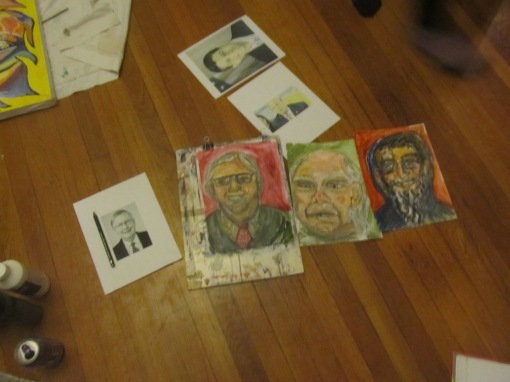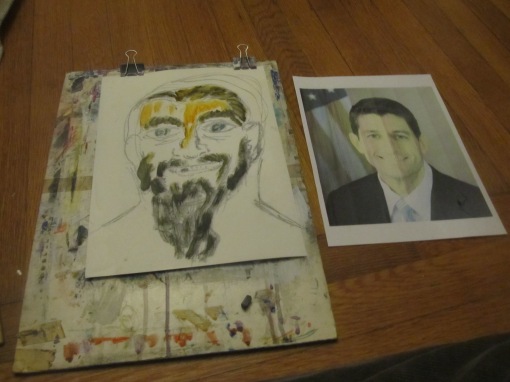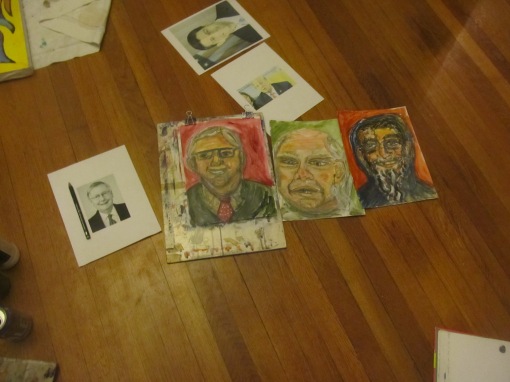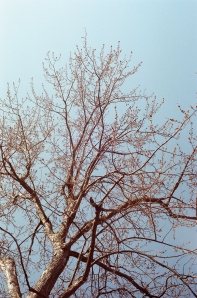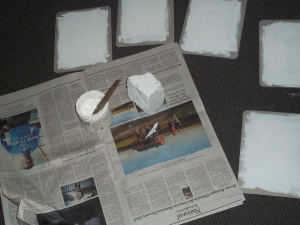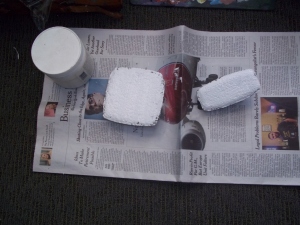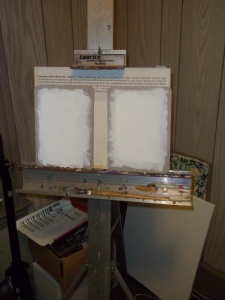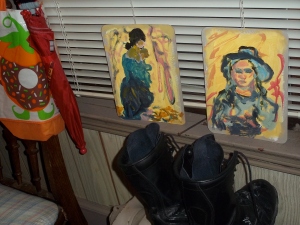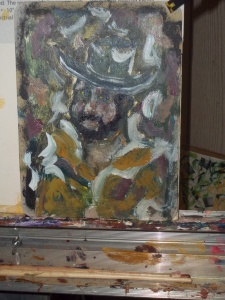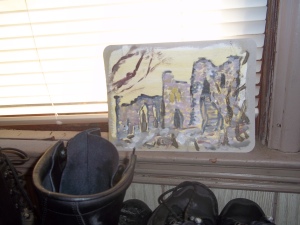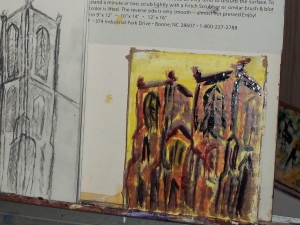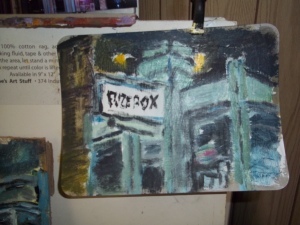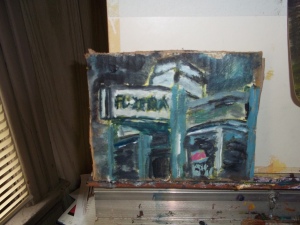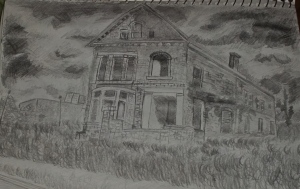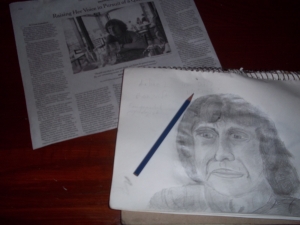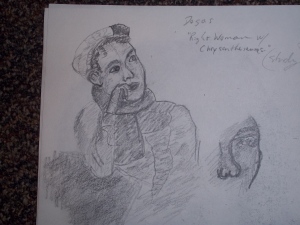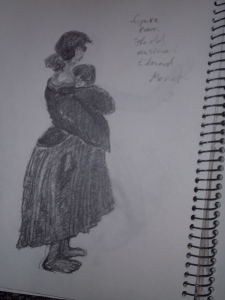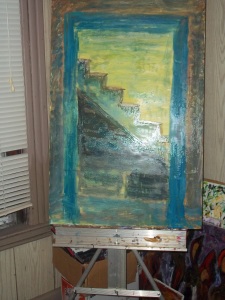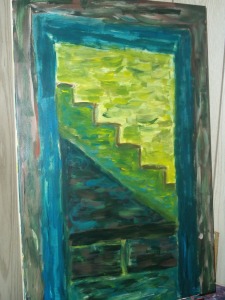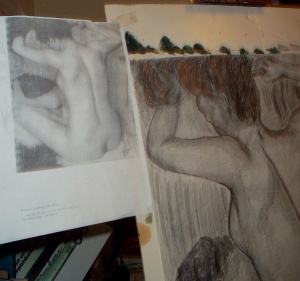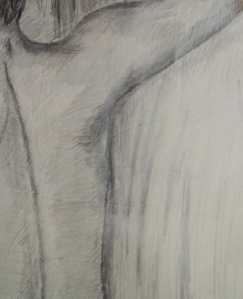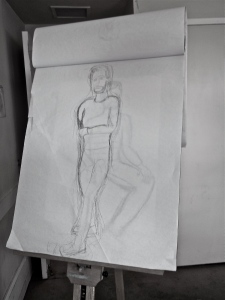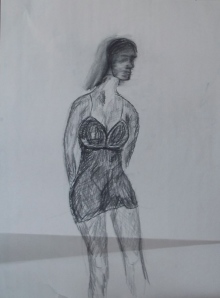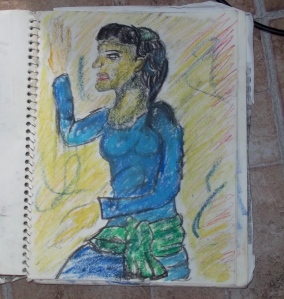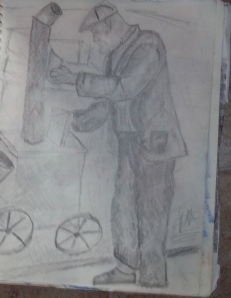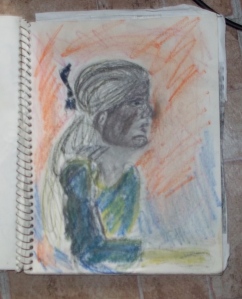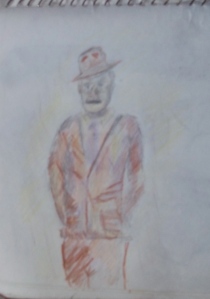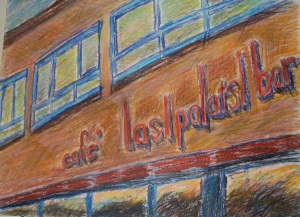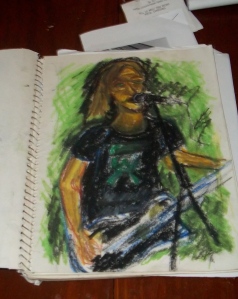The Alternative Facts Gallery (ongoing portrait series)
The other day, I was on the way to a friend’s house for a gathering of artists who meet and share their work together. I have been going for a few weeks.
As is my way, I was mulling something over on the way there. I had shared a post that was defending libraries for the techno-futurist claim, that in the information age, there is no need for public libraries and stacks of books available for anyone. The problem I was mulling over: “do these people really exist, people that imagine there is no need for public libraries making information free to all?”
Certainly, they do. There exists a sad sort of person that despite wealth and privilege and all the advantages that an education confers, –somehow look at all the grief and horror that makes up the world and, yet, the greatest injustice they can conceive of –and the one that keeps them awake at night– is the injustice that somewhere, public funds are being used to give a poor person something for free.
When I think of the pitched political battles in the US since my childhood in the 1980s, the common theme has been Conservative politicians (and some neo-Liberal ones) chipping away at all the Social Safety Net that protects the poorest among us from worse deprivations. Then, I thought:
What if, all these powerful men, were not men of wealth and status? What if I re-imagined some alternate timeline where they were not protected by their wealth, and privileged, but lived lives that were desperate and roiled by misfortune. What if these men weren’t powerful men, but homeless men, the impoverished, or the incarcerated?
This is an ongoing portrait project. For each portrait, I will create and alternative biography (based on details from their actual biographies) and create alternative fact biographies for each picture.
My end goal here is not to cast scorn on the men depicted, (though I feel the scorn is much deserved), but rather, if we can imagine powerful men as homeless men, then we ought to be able to find a way to, and the means to, raise those men and women around us who are the homeless, addicted, and impoverished, towards a better future for them and for us.
Paul Ryan, born Janesville, Wisconsin, 1970

Case notes: Paul has faced a long-time methamphetamine addiction, (15+ years) that began when he followed his father (Paul Davis Ryan Sr.) into the construction trade. He became dependent during times work was more scarce and has repeated bouts of unemployment and incarceration (drug manufacture/distribution, armed robbery, drug possession and operating a vehicle while ability impaired). The family’s resources were strained when an onsite accident caused his father’s disability and there was further strain at home when an elder relative moved into the household needing care. Paul has been homeless for about the past 8 years. He is still actively using. His drug use makes him often unpredictable and difficult to house.
Donald J. Trump born June 14th, 1946, Queens, NY.
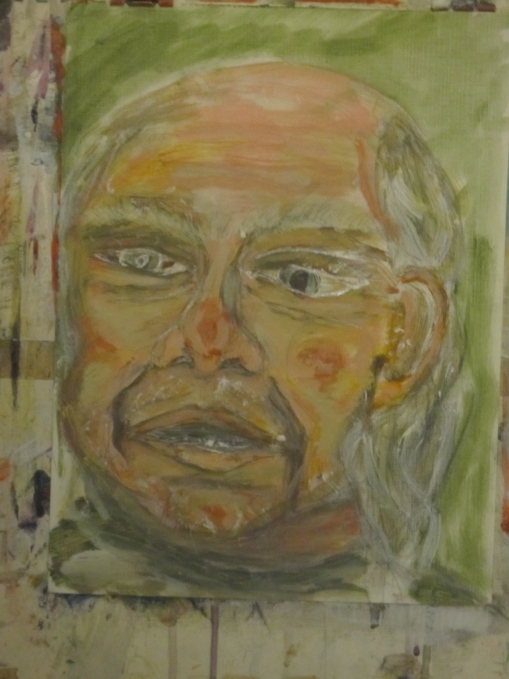
Donald Trump, alternative facts portrait, acrylic paint and graphite on gessoed paper, 8.5″ x 10″
Case notes: Donald is a mixed drug user and a serial sexual offender/pedophile (level 3). Raised in Queens, NY, when he has not been incarcerated, he has run a small subcontracting firm, –which folded when he was sued for defrauding an elderly client. He has committed sexual offenses against both adult women and adolescent children. (see read more)
The duration of Donald’s homelessness has been greater than twenty years. He is also known to be positive for Hep C (intravenous drug user).
Mitch McConnell Born Sheffield, Alabama, 1940s (date in-precise)
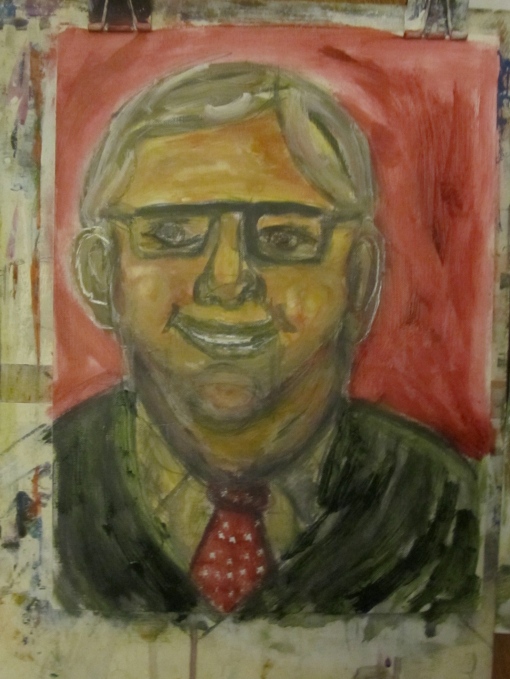
Case notes: Mitch has had lifelong mobility impairments due to inadequate treatment of polio at age 2. At present he is wheelchair-bound. Nonetheless he is an abuser of prescription painkillers. He was –for a time the proprietor of a small book-shop. He was forced into early retirement (social security remains his sole source of income) which he took with early retirement penalty when a nearby Wal-mart Supercenter made his business no longer profitable. Mitch currently resides in public housing for the aged.
Other images/process images:
